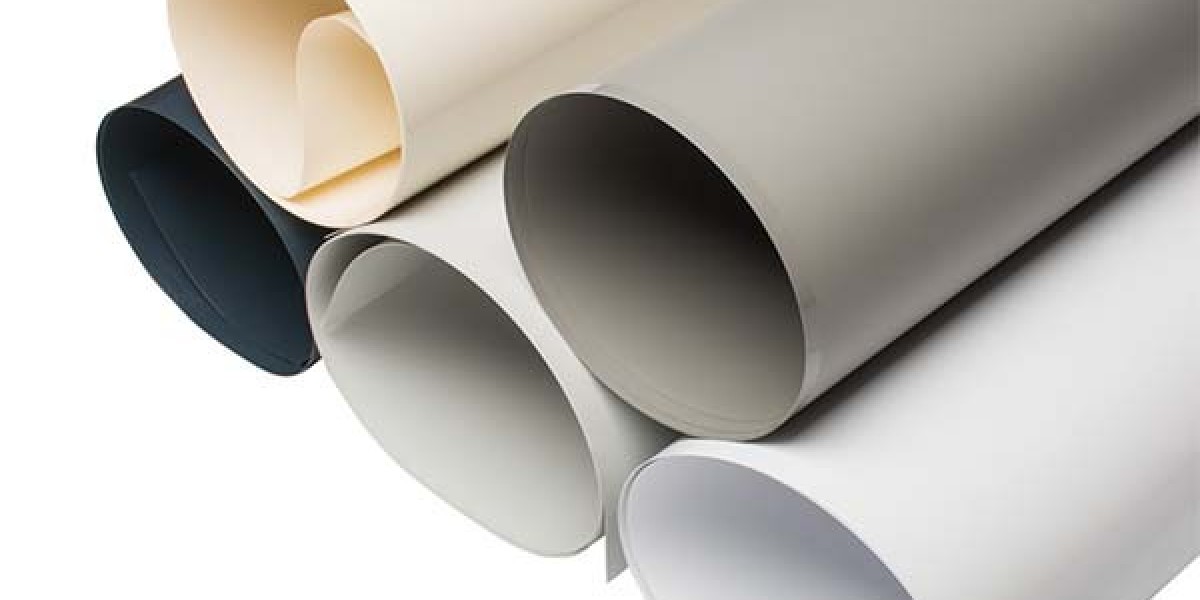The broad acceptance of glycol-modified polyester films in industrial and commercial markets stems from their distinctive balance of toughness, clarity, and formability, especially as manufacturers adopt PETG Film as a versatile medium for converting, printing, and thermoforming applications. As more sectors look for sustainable, high-efficiency materials, Shanghai Ming Shi Da International Trading Co., Ltd. offers specialized supply solutions that match modern processing demands and compliance requirements.
PETG’s mechanical behavior originates from its amorphous molecular structure. By introducing glycol during polymerization, crystallization is intentionally disrupted, resulting in improved optical purity and a smoother thermoforming response. This distinction gives converters greater design freedom for deep-draw packaging, shaped components, display elements, and functional covers. Unlike conventional PET, which can turn brittle under forming stress, the modified polymer maintains uniform elasticity, minimizing whitening, pinholes, and stress fractures during shaping. Shanghai MSD works with resin producers to ensure grade consistency tailored to specific forming ratios and production speeds.
Processing begins with precision-controlled extrusion. Before melting, resin is thoroughly dried to avoid hydrolysis, which would otherwise weaken the polymer chain and reduce clarity. Once introduced into the extruder, the resin undergoes controlled heating in multiple zones to ensure gentle melting without thermal degradation. Melt stability directly affects film flatness, so die temperatures and chill roll dynamics are calibrated carefully. The extrusion line may incorporate edge-trimming systems, inline thickness scanners, and static-control modules that optimize both product quality and handling characteristics. Shanghai MSD supports downstream converters with data on melt flow behavior, allowing accurate calibration for specific line configurations.
Surface engineering plays a large role in expanding film utility. Corona treatment is commonly used to raise surface energy and prepare the film for printing, coating, or lamination. For applications requiring extreme adhesion—such as metallic layer bonding or multi-layer composites—primer coatings are introduced to strengthen interlayer bonding. UV-protective formulations support outdoor displays, while anti-scratch coatings improve surface durability for high-contact uses such as retail displays or protective device components. These enhancements are often selected according to the functional requirements of the target market.
PETG-based materials are popular across several industries because they balance performance and processing convenience. In packaging, their clarity and toughness make them suitable for cosmetic trays, folding cartons, blister packaging, and protective enclosures that require high transparency. In the advertising sector, the material supports vibrant color reproduction and maintains dimensional stability in point-of-sale graphics, hanging displays, and illuminated signage. For industrial applications, PETG functions as mechanical protectors, electrical insulation layers, and forming substrates in various assembly operations. Shanghai MSD offers options engineered for impact resistance, heat tolerance, and enhanced print performance, enabling more specialized end uses.
Testing protocols help verify the reliability and suitability of PETG-based films. Tensile testing measures elongation and modulus values to determine how the material behaves during stretching and forming. Impact testing—both falling dart and pendulum types—evaluates resistance to sudden force. Optical clarity is assessed using haze meters and UV-visible spectrophotometers to verify transparency levels. Thermal performance tests measure softening temperatures, shrinkage tendencies, and dimensional stability under heat, all of which influence processing windows in thermoforming environments. Chemical resistance tests determine compatibility with cleaning agents, inks, and adhesives, which is especially important in medical and electronics fields. Shanghai MSD cooperates with laboratories to ensure that product batches match international testing standards.
Converters benefit from the material’s consistent behavior during machining and finishing. PETG sheets and films can be die-cut, laser-cut, routed, or drilled with minimal risk of cracking. They accept a wide range of inks, including UV, solvent, and screen-printing formulations. In forming operations, controlled heat distribution allows precise shaping with clean edges and uniform wall thickness. For laminated structures, PETG acts as a stable bonding layer that retains clarity after processing. Shanghai MSD works with clients to match film grades to machining methods, maximizing productivity and reducing waste.
With the material’s continuing rise in global industries, Shanghai Ming Shi Da International Trading Co., Ltd. provides technical guidance, grade selection support, and stable supply channels for customers integrating PETG-based solutions into manufacturing workflows. More details on material characteristics and product categories are available at: https://www.shanghaimsd.com/ .







